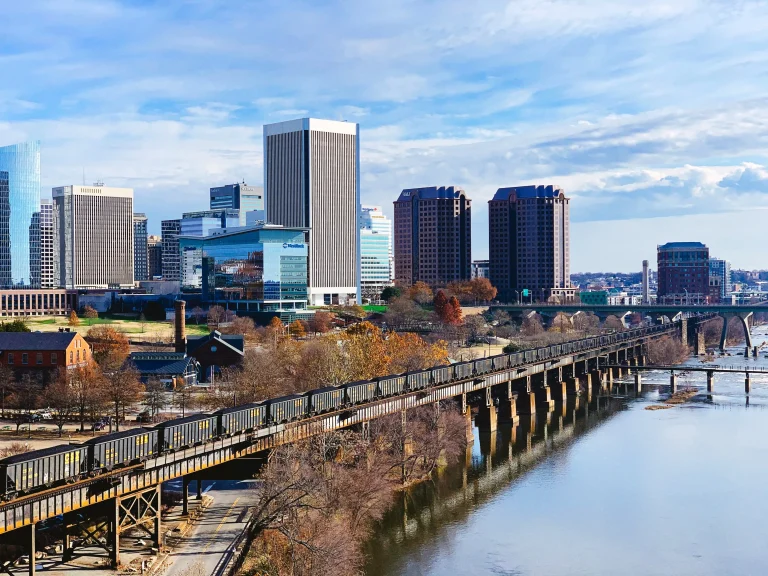How Cold Does It Get In San Francisco?
With its famous fog and coastal location, San Francisco is known for having chilly summers and mild winters compared to other parts of California. But just how cold does it actually get in the city by the bay? If you’re wondering what temperatures to expect for an upcoming trip to San Francisco, read on for a complete overview.
If you’re short on time, here’s a quick answer: In San Francisco, average low temperatures range from the mid-40s in the winter to the mid-50s in the summer. The coldest months are December, January and February when overnight lows drop into the 40s and occasionally 30s. The all-time record low is 27°F.
Typical San Francisco Low Temperatures by Month
December: Average 47°F
In December, San Francisco experiences relatively mild winter temperatures with an average low of 47°F. While other parts of the country may be battling freezing temperatures and snowstorms, San Francisco residents enjoy a more moderate climate.
It’s not uncommon to see locals strolling along the streets in light jackets, taking advantage of the city’s year-round outdoor activities.
January: Average 46°F
January brings similar temperatures to December, with an average low of 46°F. San Francisco’s proximity to the Pacific Ocean plays a significant role in maintaining these mild winter temperatures. The ocean regulates the city’s climate, preventing extreme temperature fluctuations.
Visitors and locals alike can continue to explore the city without worrying about bundling up too much.
February: Average 48°F
As February rolls in, San Francisco experiences a slight increase in temperature with an average low of 48°F. This remains consistent with the city’s overall mild climate. The cool ocean breeze and occasional fog are characteristic of San Francisco’s weather, creating a refreshing and unique atmosphere for residents and tourists to enjoy.
June-August: Average 55-58°F
Contrary to what one might expect from a typical summer, San Francisco experiences cooler temperatures during the June to August period. The average low hovers around 55-58°F, making it necessary to carry a light jacket or sweater when venturing out.
The city’s famous fog, affectionately referred to as “Karl the Fog,” often rolls in during this time, adding a touch of mystery and charm to the city’s landscape.
While these average low temperatures provide a general idea of what to expect in San Francisco, it is important to note that weather can vary from year to year. It is always a good idea to check the forecast before planning any outdoor activities.
Extreme Low Temperature Statistics
San Francisco, known for its mild climate, is not typically associated with freezing temperatures. However, there have been instances where the city has experienced extreme cold weather. Let’s take a look at some of the statistical data related to the lowest temperatures recorded in San Francisco.
All-Time Record Low: 27°F on December 11, 1932
On December 11, 1932, San Francisco experienced its all-time record low temperature of 27°F. This was a rare occurrence for the city, as it is located near the coast and is influenced by the Pacific Ocean’s moderating effects.
The cold snap on that day was a result of a cold air mass moving into the region, bringing frigid temperatures that were quite unusual for San Francisco.
Average Days per Year Below Freezing: 3.25
While San Francisco doesn’t often see freezing temperatures, there are still a few days each year where the mercury dips below the freezing point. On average, the city experiences about 3.25 days per year with temperatures below freezing.
These colder days are typically associated with winter months, although they are still relatively infrequent compared to other parts of the country.
It’s important to note that these statistics are based on historical data and can vary from year to year. Climate patterns and weather phenomena can influence the occurrence of extreme cold temperatures in any given location.
If you’re planning a trip to San Francisco during the winter months, it’s always a good idea to check the weather forecast and pack accordingly. While the chances of encountering freezing temperatures are relatively low, it’s better to be prepared than caught off guard by an unexpected cold spell.
For more information on San Francisco’s weather patterns and historical climate data, you can visit the Weather.com website or consult local meteorological sources.
What Determines San Francisco’s Cold Temps
San Francisco, known for its iconic Golden Gate Bridge and vibrant cultural scene, also has a reputation for its chilly temperatures. But what exactly determines just how cold it gets in this city by the bay? Let’s take a closer look at the factors that contribute to San Francisco’s cool climate.
Coastal Influence
One of the primary factors that influences San Francisco’s cold temperatures is its proximity to the Pacific Ocean. The city’s location on the coast exposes it to cool marine air that flows in from the ocean.
This coastal influence can bring chilly temperatures, especially during the summer months when the ocean water is cooler than the land. As a result, San Francisco experiences what locals refer to as “June Gloom,” a period of overcast and cool weather.
Seasonal Wind Patterns
The seasonal wind patterns also play a significant role in San Francisco’s cold temperatures. During the summer, a phenomenon known as the “marine layer” often develops. This layer of cool, damp air gets pushed inland by the prevailing winds, bringing cool temperatures and fog to the city.
In contrast, during the winter, the wind patterns shift, and the city experiences offshore winds, which can bring colder air from inland areas, leading to cooler temperatures.
Fog and Microclimates
San Francisco is famous for its fog, which adds to the city’s cool and sometimes chilly temperatures. The cool marine air mentioned earlier often combines with the warm air from the inland valleys, creating a stark temperature contrast.
This temperature difference can result in the formation of fog, which blankets the city and contributes to its cool climate. Additionally, San Francisco’s unique topography creates microclimates within the city.
Certain neighborhoods or areas may be more prone to fog or colder temperatures due to their specific geographical features.
Coldest Neighborhoods
San Francisco is known for its mild and temperate climate, but there are still some neighborhoods where the temperatures can drop significantly. Here are three of the coldest neighborhoods in the city:
Sunset District
The Sunset District is located on the western side of the city and is known for its chilly weather. The neighborhood is often covered in fog, which contributes to its cooler temperatures. Residents in the Sunset District can expect average lows in the mid-50s Fahrenheit (around 13 degrees Celsius) during the colder months.
It’s always a good idea to bring a jacket when visiting this part of San Francisco!
Richmond District
Similar to the Sunset District, the Richmond District is also situated on the western side of San Francisco. It experiences similar weather patterns and can get quite cold, especially in the evenings. Average low temperatures in the Richmond District can range from the high 40s to low 50s Fahrenheit (around 8-11 degrees Celsius).
If you’re planning to explore this neighborhood, make sure to dress warmly to stay comfortable.
Presidio Heights
Presidio Heights is located near the Presidio, a former military base turned national park. This neighborhood is known for its beautiful homes and stunning views of the Golden Gate Bridge. However, it can also get quite cold due to its proximity to the coast.
Average low temperatures in Presidio Heights can dip into the low 50s Fahrenheit (around 10 degrees Celsius). If you’re lucky enough to live in this area, be prepared for cooler temperatures and enjoy the scenic beauty!
While these neighborhoods may experience colder temperatures compared to other parts of San Francisco, it’s important to note that the city as a whole still enjoys a relatively mild climate throughout the year.
The average high temperature in San Francisco ranges from the mid-50s to the low 70s Fahrenheit (around 13-23 degrees Celsius), making it a great place to visit or live.
Tips for Visiting San Francisco in Winter
San Francisco may be known for its mild climate throughout the year, but that doesn’t mean it doesn’t get chilly in the winter months. If you’re planning a trip to the city during this time, here are some tips to help you stay warm and comfortable:
Layer Up
Layering is key when it comes to dressing for the winter weather in San Francisco. The city’s microclimates can create temperature fluctuations throughout the day, so it’s important to be prepared. Start with a base layer, such as a lightweight thermal shirt, and then add a sweater or fleece on top.
Finally, top it off with a waterproof and wind-resistant jacket to protect against any unexpected rain or gusts of wind.
Wind and Water Resistant Outerwear
The famous fog and winds of San Francisco can make the temperature feel even colder than it actually is. Investing in a wind and water-resistant outerwear is a wise choice to stay comfortable during your visit.
Look for jackets or coats that are specifically designed to block the wind and repel water. This will help you stay warm and dry as you explore the city.
Hats, Gloves, and Scarves
Don’t forget to accessorize! Hats, gloves, and scarves are not only fashionable but also practical when it comes to staying warm in San Francisco’s winter. A cozy beanie or hat will keep your head warm, while gloves will protect your hands from the chilly winds.
And don’t forget a scarf to keep your neck and face shielded from the cold. These small accessories can make a big difference in your comfort level while exploring the city.
Remember, the weather in San Francisco can be unpredictable, so it’s always a good idea to check the forecast before your trip. By following these tips and dressing appropriately, you’ll be able to enjoy all that the city has to offer, even during the colder months.
Conclusion
While winters in San Francisco are relatively mild, chilly temperatures in the 40s combined with wind, fog, and dampness can make it feel colder than it is. Checking forecasts and packing the right cold weather attire is important to stay comfortable when visiting during the colder months. But for those who come prepared, the city still has plenty of sights to offer all year round.








